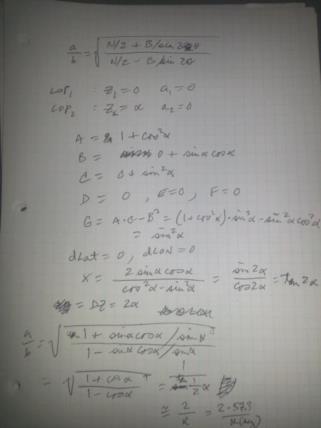
NavList:
A Community Devoted to the Preservation and Practice of Celestial Navigation and Other Methods of Traditional Wayfinding
From: Frank Reed
Date: 2017 Jun 9, 16:15 -0700
I wrote previously:
Turns out there's a relatively simple formula for it, which can be derived from the usual rules for a statistical fix (details in PS). It is
b/a = tan(dZ/2).
There is a very nice fast approximation for this: the ratio is dZ/114 when dZ is in degrees. So if you have two sights separated in azimuth by about one compass point (11.25°), the ratio of the length of the ellipse to the width is just about 10-to-1. If the sights are separated by two compass points then the ratio is about 5-to-1. And so on.
I'm attaching a quick photo of the derivation of this. It's nothing complicated. You can assume zero intercepts. Then "without loss of generality" assume the first LOP has Z=0 and the second has some angle to it. Crunch through the calculation of the quantities A-G in the statistical fix. Then calculate X and a/b. Throw in a few trig identities, and you're done. Sorry about my handwriting. This wasn't intended for publication!
Frank Reed







